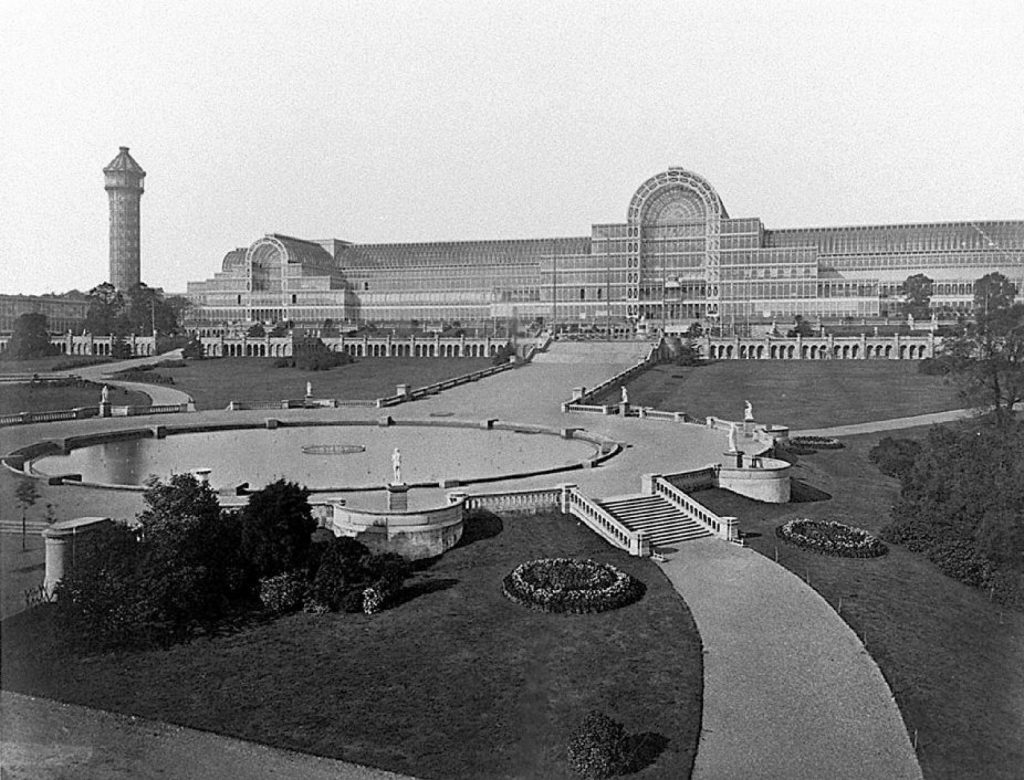
Universal Exhibitions took place all over Europe, with every nation trying to outdo the next. The start of the mania was the 1851 Exhibition in London, where the Crystal Palace, a palace of glass and metal, struck everyone with its transparency, its vastness and its construction techniques. This was one of the first modular buildings that could be manufactured quickly with universal parts. The Crystal Palace had its own viewing platform when they took command of an old shot tower.
- London – Crystal Palace, 1851
- New York – Crystal Palace, 1853
- Paris – Palace of Industry, 1855
- Paris – The Exposition Universelle of 1889 (Eiffel Tower)
- Paris – Grand Palais, 1900
1851 London
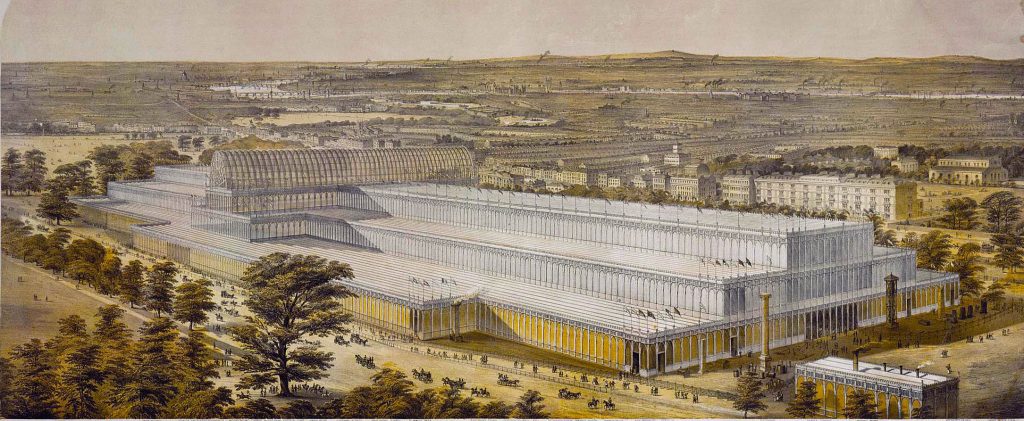
In 1853 a crystal palace was constructed in New York, with their own viewing tower, made in the same way many oil-rigs were.
1853 New York
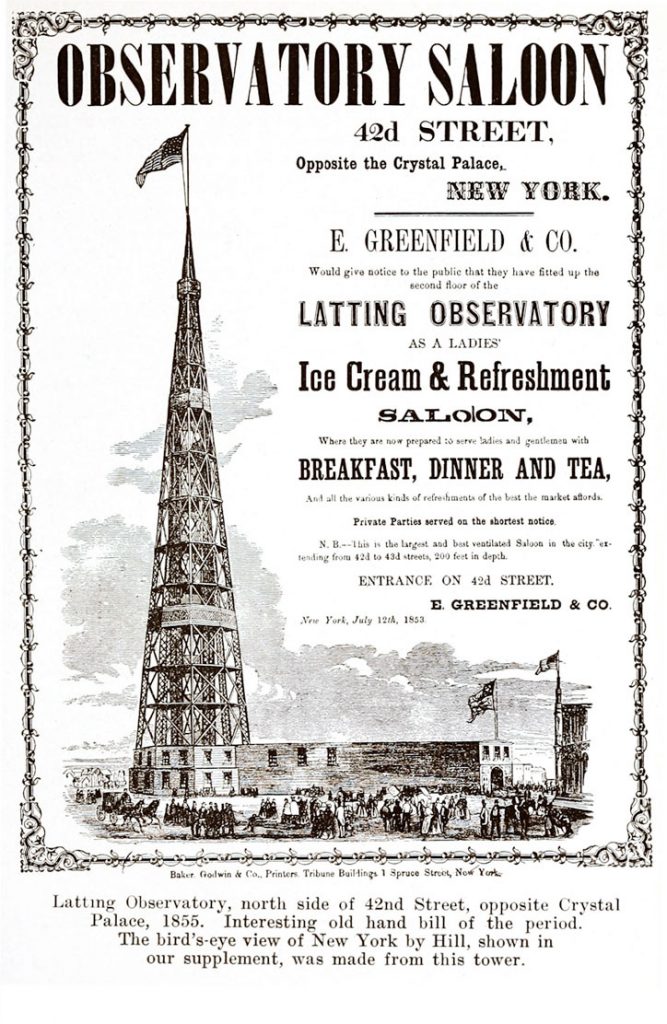
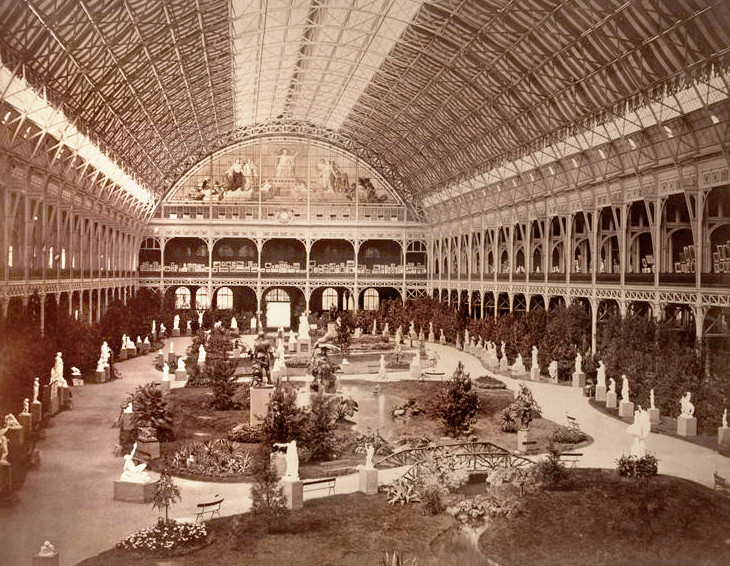
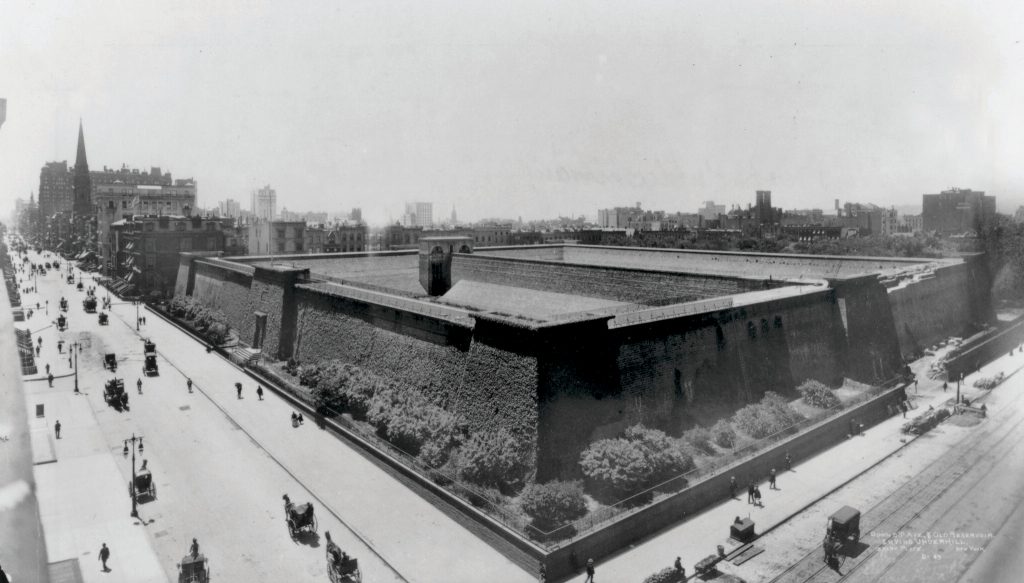
New York Crystal Palace was an exhibition building constructed for the Exhibition of the Industry of All Nations in New York City in 1853

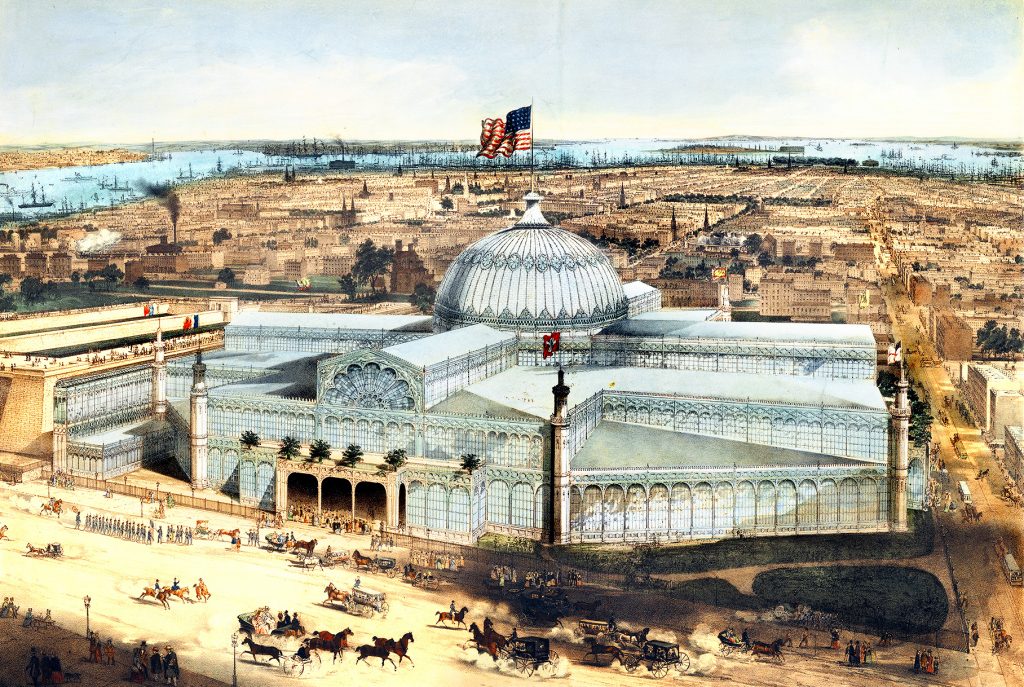
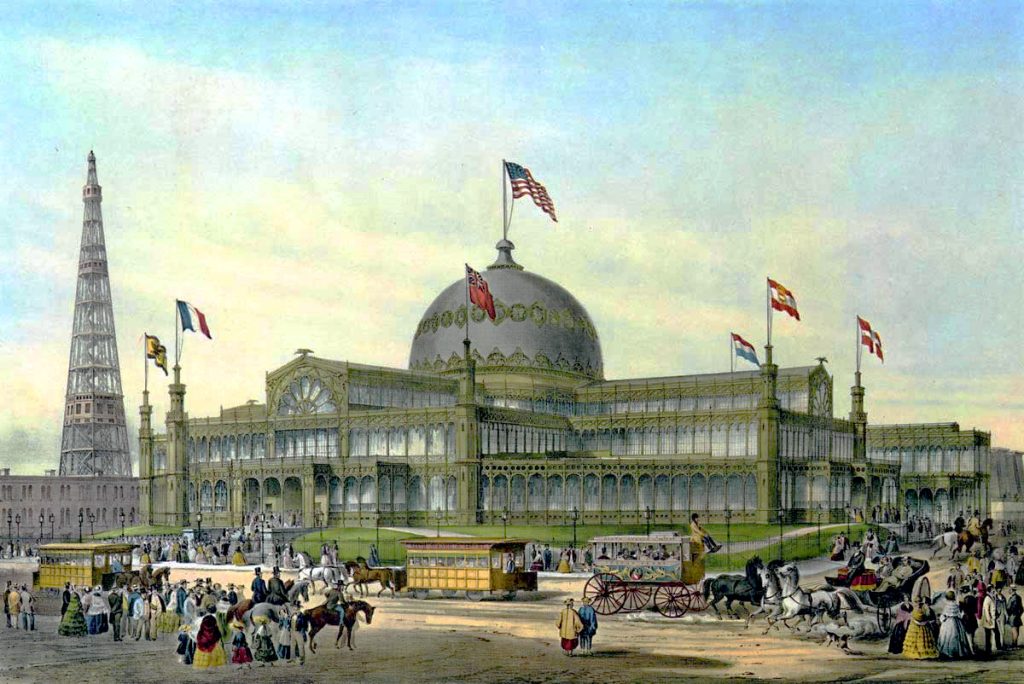
The New York Exhibition hall was burnt down in a fire.
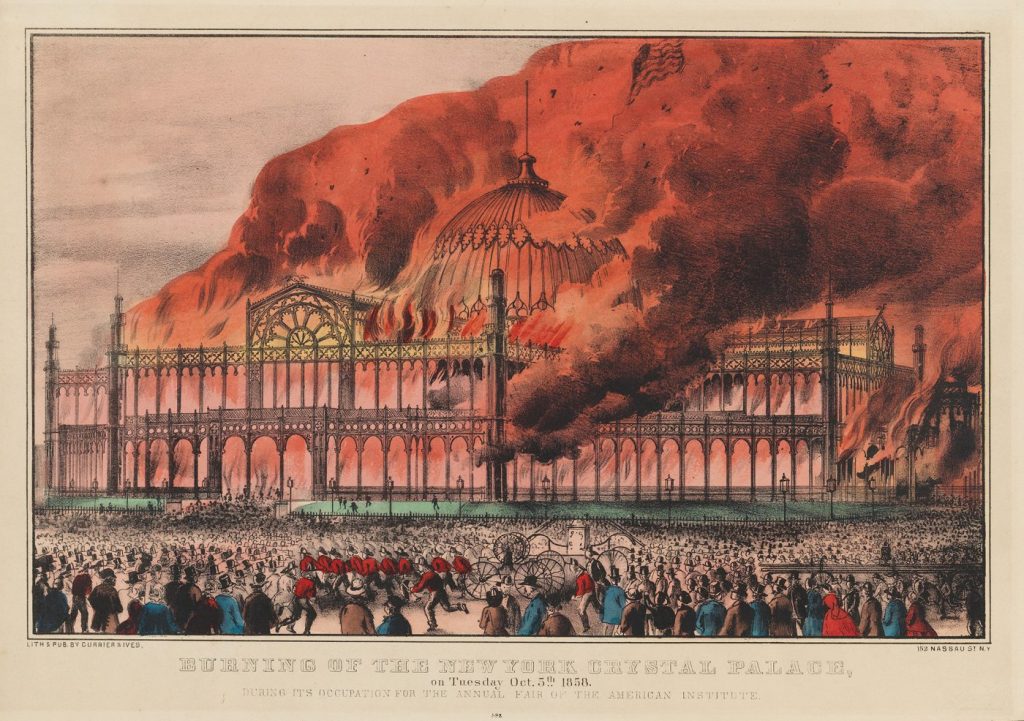
1855 Paris
Then in 1855 Paris then had their own exhibition where the Palace of Industry was built for the occasion, inspired by the Crystal Palace. France thus shows its ability to renew the technical feat, even adding a stone facade, which fascinates the public.
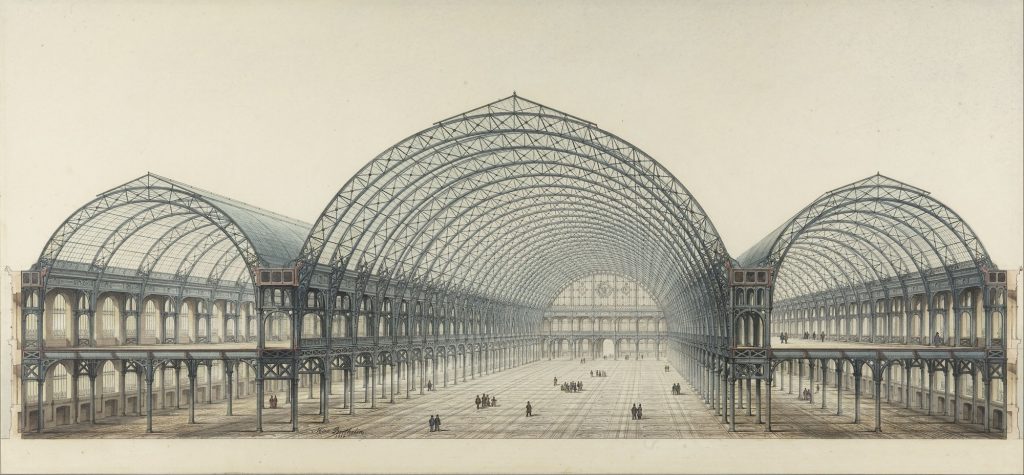
Construction of the Grand Palais began in 1897 following the demolition of the Palais de l’Industrie (Palace of Industry) as part of the preparation works for the Universal Exposition of 1900
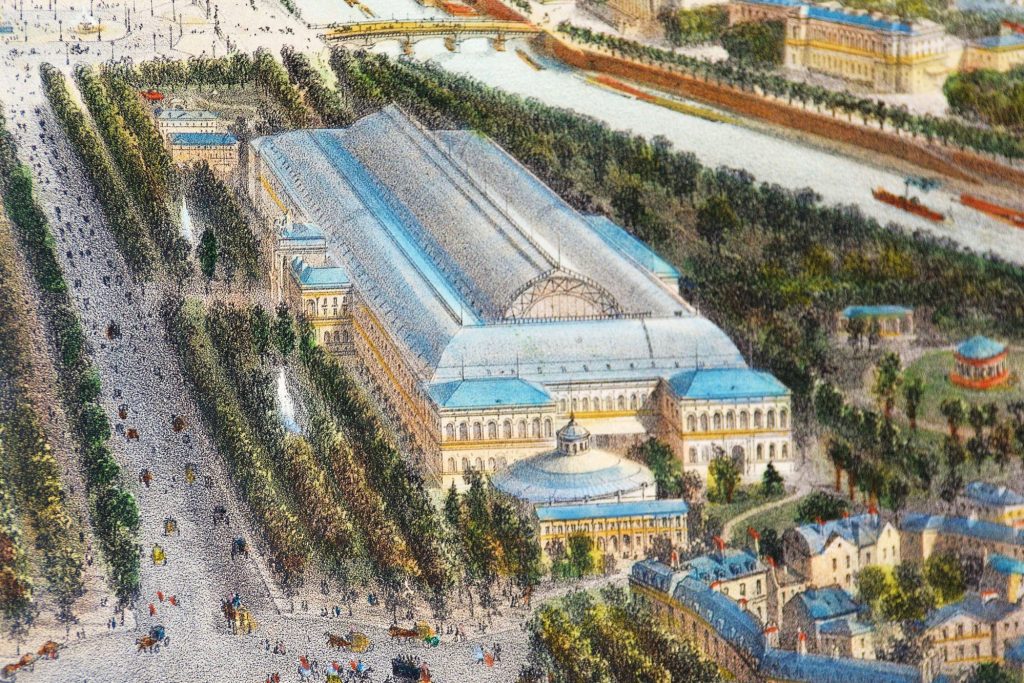
1889 Paris
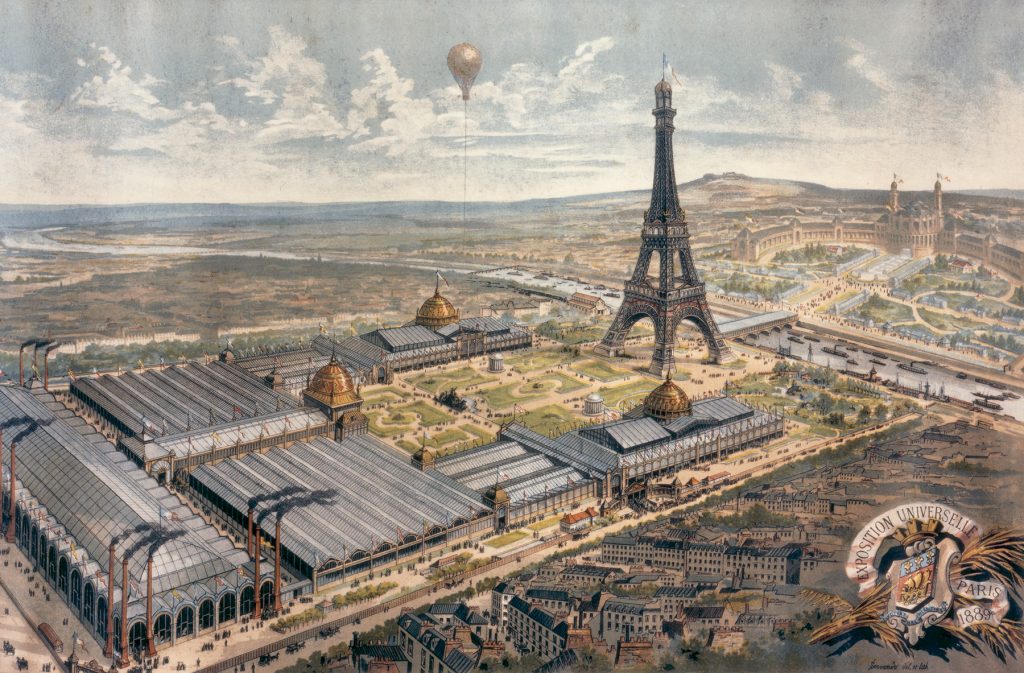
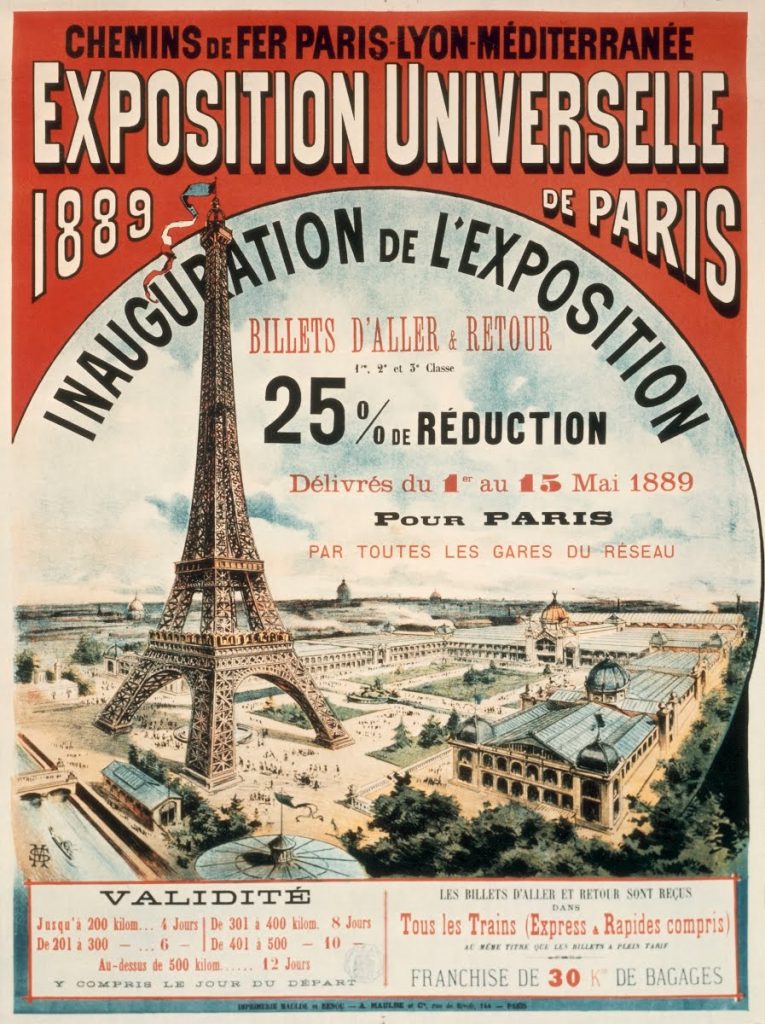
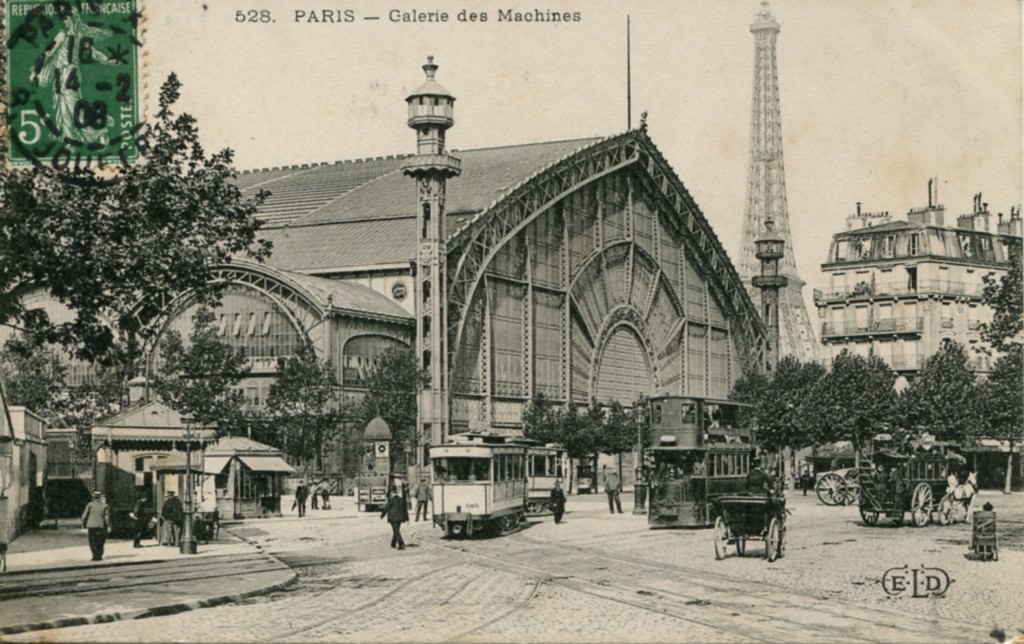
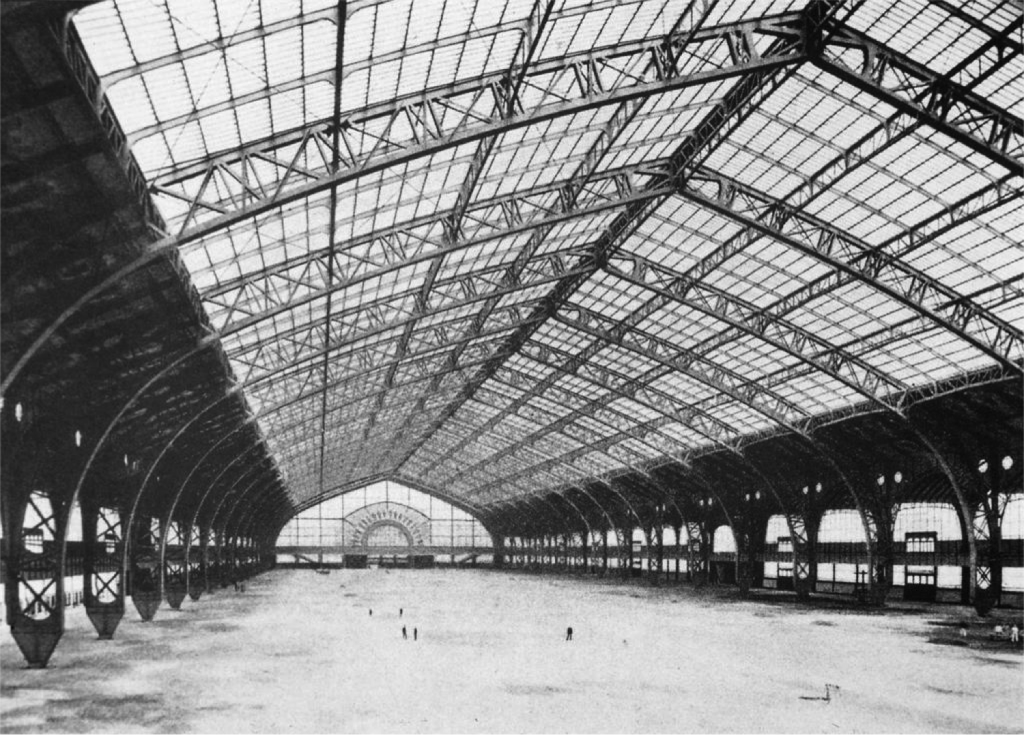
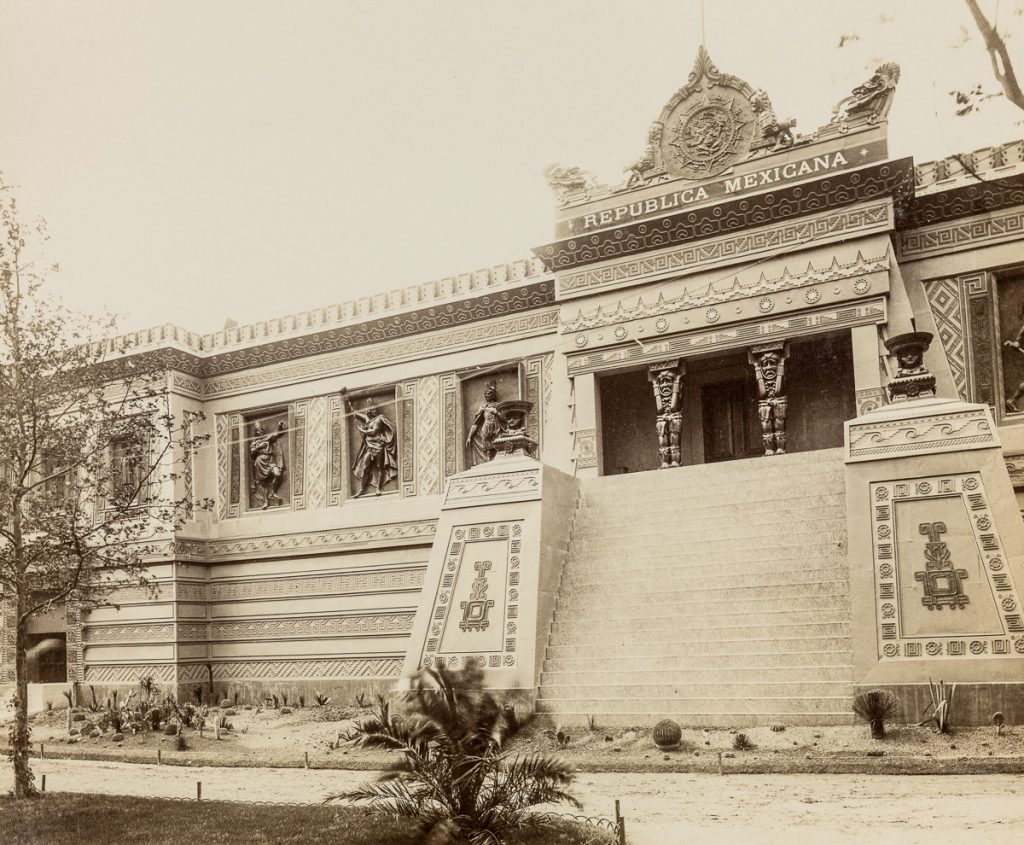
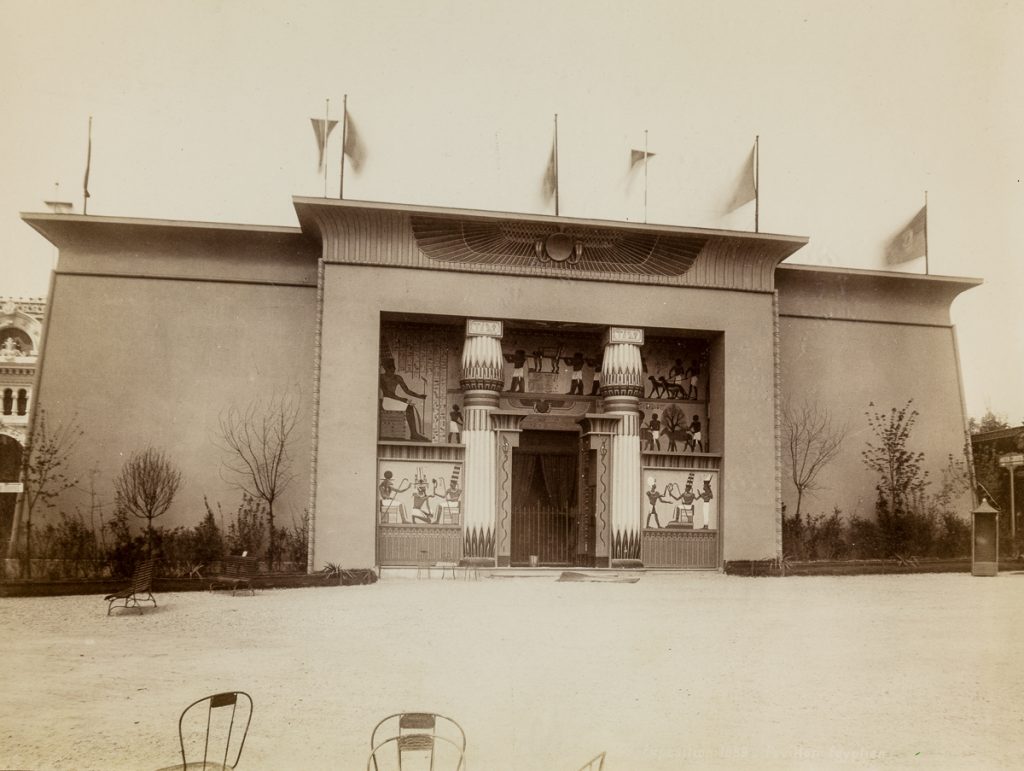
1900 Paris
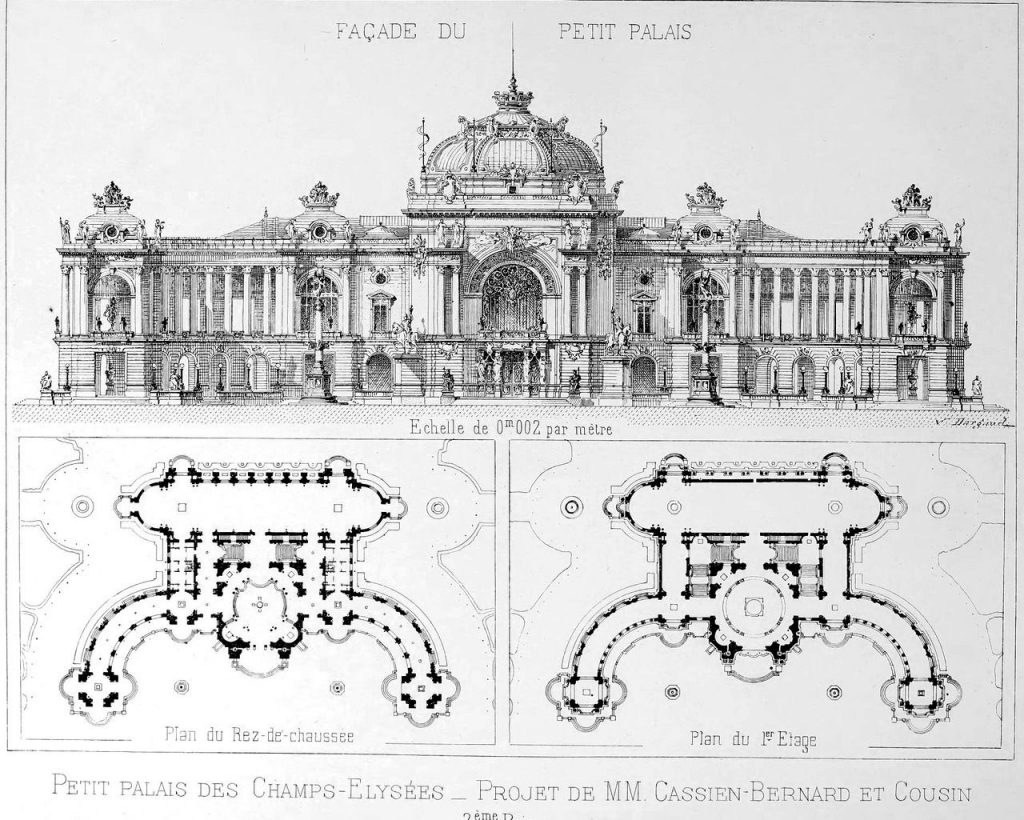
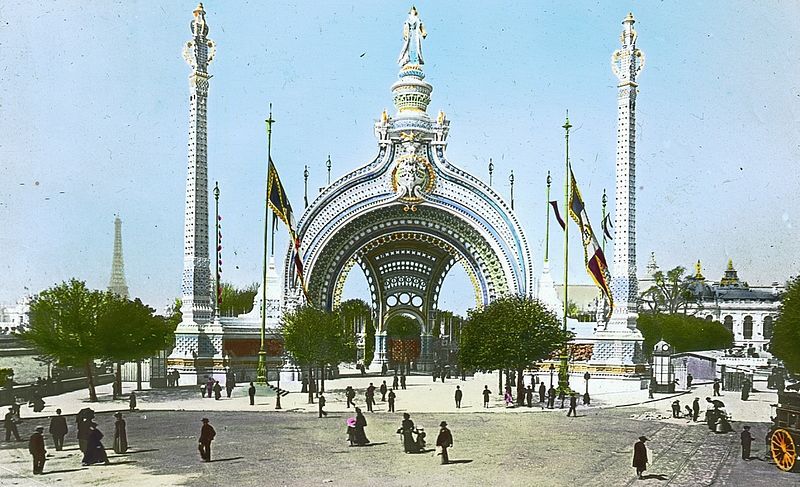

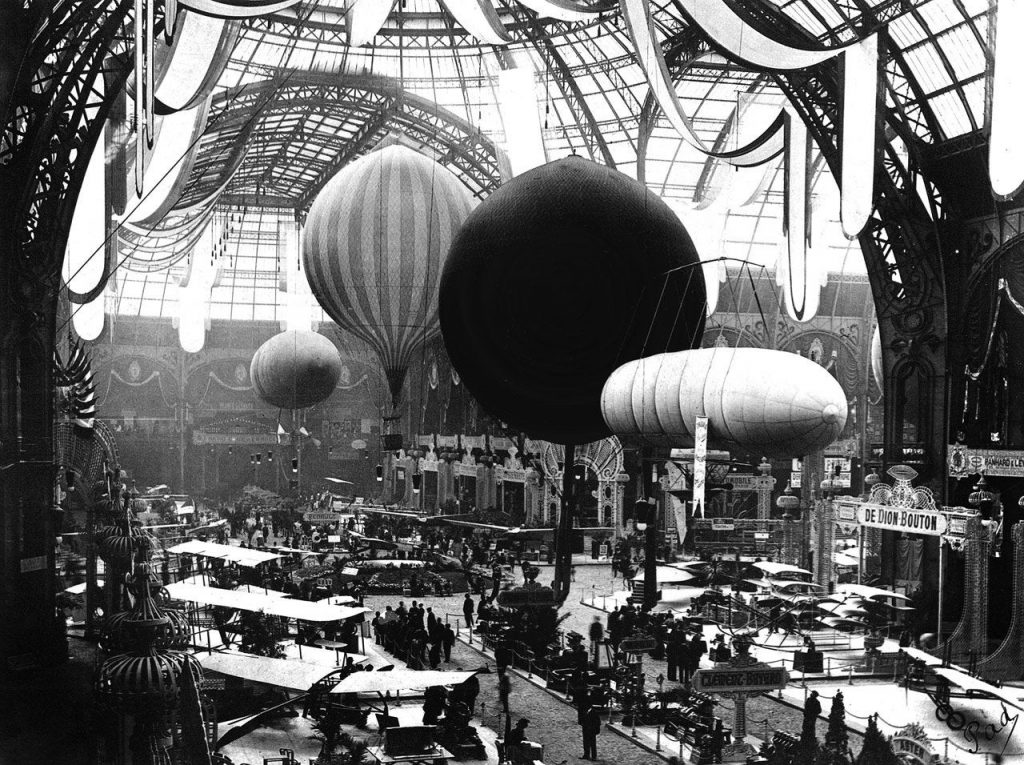
Crystal Palace, originally constructed in London’s Hyde Park in 1851. Later it was dismantled and rebuilt to a different design on Sydenham Hill in south London. The second Crystal Palace burned down in 1936 but the local district still bears its name.

